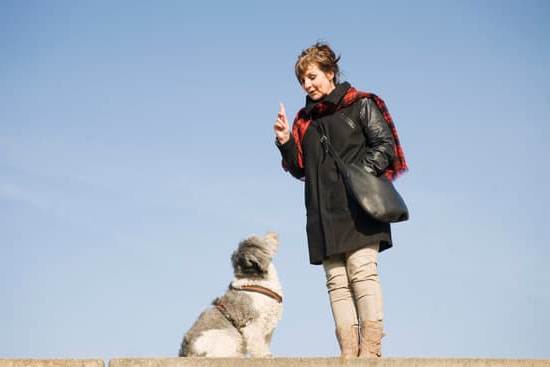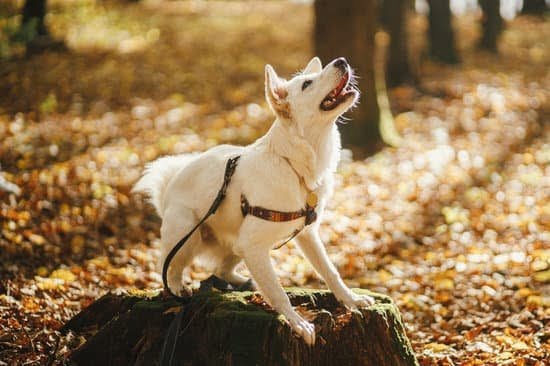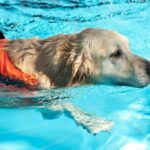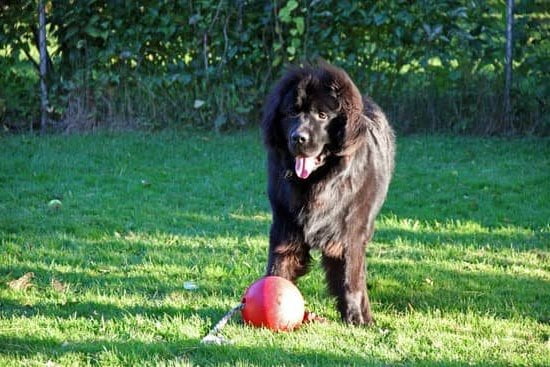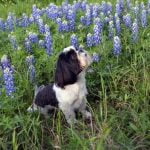Bed bug infestations have become a growing concern in recent years, causing headaches for homeowners and businesses alike. These tiny pests are difficult to detect and eradicate, often leading to severe infestations before their presence is even noticed. Fortunately, dogs have proven to be highly effective in sniffing out these elusive bugs, making them invaluable allies in the fight against bed bugs.
As the problem of bed bug infestations continues to worsen, it is crucial to find effective detection methods that can identify these pests early on. This is where dogs come in. Canines possess an incredible sense of smell that surpasses our own by leaps and bounds. Their noses are capable of detecting scents at levels far beyond human perception, making them perfect candidates for bed bug detection training.
The idea of using dogs for scent detection is not new; they have been utilized for various jobs such as drug detection and search-and-rescue missions for many years. However, their ability to detect bed bugs with remarkable accuracy has gained increasing attention in recent times. In fact, research has shown that well-trained dogs can identify the presence of live bed bugs or their eggs with an exceptional success rate, greatly surpassing other traditional detection methods.
By harnessing the power of a dog’s nose, homeowners, pest control professionals, and businesses can benefit from efficient and reliable early detection methods for bed bug infestations. In the following sections, we will delve into the science behind dogs’ olfactory abilities and explore how they can be trained specifically for bed bug detection.
Additionally, we will provide insights into finding the right breed for this purpose and offer tips on preparing your dog for training. With these tools at your disposal, you’ll be well on your way to effectively training your dog to sniff out those pesky bed bugs before they become a larger problem.
Understanding the Science Behind Dogs’ Sense of Smell
When it comes to detecting bed bugs, dogs have an extraordinary sense of smell that surpasses human capabilities. The olfactory abilities of dogs are truly remarkable, with some estimates suggesting that their noses are up to 100,000 times more sensitive than ours. This incredible sense of smell is what makes them ideal for training in bed bug detection.
Dogs possess a specialized organ called the vomeronasal organ, also known as Jacobson’s organ, which allows them to detect and analyze odors in a way that humans cannot comprehend. Their noses consist of millions of scent receptors, compared to our mere 5 million. Additionally, the part of their brain dedicated to analyzing scents is much larger than ours.
To put it into perspective, imagine being able to detect individual ingredients in a complex dish just by smelling it or identifying a specific person by their unique scent amongst a crowd. This is the level of olfactory prowess that dogs possess.
Furthermore, dogs have been selectively bred for certain traits over centuries, resulting in specific breeds that excel in scent detection. Breeds such as Beagles, Bloodhounds, German Shepherds, and Labradors are commonly used for bed bug detection due to their exceptional olfactory abilities.
When training your dog to sniff out bed bugs, it is important to understand the science behind their sense of smell and appreciate the immense potential they hold in this field. By harnessing these abilities through proper training techniques and providing opportunities for them to utilize their natural talents, you can help solve the rising issue of bed bug infestations effectively and efficiently.
Finding the Right Breed for Bed Bug Detection
When it comes to training a dog to sniff bed bugs, not all breeds are created equal. Some dogs have a natural predisposition for scent detection, making them more suitable for this specialized training. It is important to choose the right breed that possesses exceptional scent detection skills.
Certain dog breeds are known for their superior olfactory abilities and make excellent candidates for bed bug detection training. One such breed is the Beagle. With their keen sense of smell and strong hunting instincts, Beagles have been successfully used in various scent detection tasks, including identifying bed bug infestations.
Another breed that excels in scent detection is the Belgian Malinois. These intelligent and highly trainable dogs are often used in law enforcement and search and rescue operations due to their exceptional ability to pick up even faint scents. Their drive and determination make them well-suited for bed bug detection work.
When choosing a breed for bed bug detection, it is crucial to consider certain qualities that will contribute to their success in sniffing out these pests. A dog with a calm demeanor, high energy levels, and an eagerness to please makes an ideal candidate. Additionally, a strong food drive or play drive can be beneficial during training as it allows you to reward the dog with treats or toys.
It’s worth noting that while specific breeds may be better suited for this type of work, any breed has the potential to be trained as a bed bug detector with the right guidance and training techniques. Ultimately, what matters most is selecting a dog whose personality and characteristics align with the demands of detecting bed bugs through scent.
Preparing Your Dog for Bed Bug Training
Before diving into bed bug detection training, it is crucial to ensure that your dog has a solid foundation in basic obedience training. Basic obedience training instills important skills such as focus, impulse control, and the ability to follow commands. These skills will serve as the building blocks for your dog’s success in scent detection training.
To start preparing your dog for bed bug training, focus on socializing them and exposing them to different environments. This will help them become comfortable and confident in various settings, which is essential for their success as a detection dog. Take your dog on regular walks in different locations, introduce them to new people and animals, and expose them to different sights and sounds.
In addition, consider enrolling your dog in a structured obedience class or working with a professional trainer. The guidance of an experienced trainer can help ensure that you are using effective techniques and methods while providing proper guidance for both you and your dog throughout the training process. A trainer can also help identify any potential behavioral issues that may need to be addressed before moving on to scent detection training.
Overall, taking the time to properly prepare your dog for bed bug training will greatly increase their chances of success. By establishing a strong foundation of obedience skills and exposing them to various environments, you are setting them up for success in their journey towards becoming a skilled bed bug detection dog.
| Skills | Benefits |
|---|---|
| Focus | Allows the dog to concentrate on the task at hand during training sessions. |
| Impulse Control | Helps the dog resist distractions and maintain focus on detecting bed bugs. |
| Ability to Follow Commands | Ensures that the dog can effectively respond to cues and directions during training. |
| Comfort in Different Environments | Enables the dog to work confidently in various settings, increasing their detection abilities. |
Building a Strong Foundation
Building a strong foundation in scent training is crucial when training a dog to sniff bed bugs. Before diving into specific bed bug detection training, it is essential to establish a solid understanding of scent discrimination and create a strong bond between the handler and the dog. This section will provide step-by-step instructions on introducing your dog to scent discrimination.
- Start with basic obedience training: Before beginning scent training, ensure that your dog has a good understanding of basic obedience commands such as “sit,” “stay,” and “come.” This will establish control and communication between you and your dog during the training process.
- Choose a specific target odor: Decide on a target odor that you want your dog to search for, such as a food treat or an essential oil. Begin by making sure that your dog understands the concept of finding the target odor by using positive reinforcement techniques such as clicker training or verbal praise when they successfully locate it.
- Introduce scent discrimination: Once your dog is familiar with finding the target odor, it’s time to introduce them to scent discrimination. Start by presenting two similar objects, one scented with the target odor and one unscented. Place them in front of your dog and encourage them to sniff both objects. When they indicate which object has the scent (e.g., touching it with their nose or paw), reward them with praise or a treat.
- Gradually increase difficulty: Once your dog consistently demonstrates an understanding of scent discrimination, gradually increase the difficulty by adding more similar objects with only one scented item mixed in. Practice this exercise repeatedly until your dog consistently identifies and indicates the correct object every time.
- Expand on different environments: To ensure that your dog can generalize their skills in various environments, gradually introduce new locations while practicing scent discrimination exercises. Practice indoors, outdoors, in different rooms or areas of your home, and eventually expand to public spaces where bed bug detection may be required.
By building a strong foundation in basic scent training, you are setting your dog up for success when transitioning to bed bug detection training. Remember to be patient with your furry friend and always reward their progress with positive reinforcement. With consistent training and practice, your dog will develop the skills needed to effectively detect and alert you to the presence of bed bugs.
Transitioning to Bed Bug Detection Training
Understanding the Differences
When transitioning from general scent training to bed bug detection training, it’s important to understand the key differences between the two. General scent training focuses on teaching a dog to identify and locate a variety of scents, whereas bed bug detection training specifically targets the unique odor of bed bugs. Bed bugs emit pheromones that are distinct from other scents, and dogs need to be trained to recognize and alert to this specific odor.
To make this transition, start by gradually introducing your dog to the specific scent of bed bugs. This can be done by using live or dead bed bugs contained in a sealed container. Begin by allowing your dog to explore the container while keeping its focus on the scent. Reward your dog for showing interest in and engaging with the scent, gradually increasing the difficulty level by hiding the container in various locations.
Techniques for Bed Bug Detection Training
There are several techniques that can be employed when transitioning to bed bug detection training. One common method is called “scent imprinting,” where a dog is exposed to a large number of bed bugs at once. The goal is for the dogs to become highly familiar with the odor of bed bugs so they can easily distinguish it from other scents.
Another technique is known as “proofing,” which involves providing dogs with opportunities to practice detecting and alerting on hidden bed bugs in real-world settings. This helps reinforce their ability to discriminate between different odors and ensures they can accurately detect bed bugs even in unfamiliar environments.
It’s important to note that during this process, consistency is key. Training sessions should be frequent and short, reinforcing positive behavior with rewards each time your dog successfully detects and alerts on the scent of bed bugs.
Incorporating Real-Life Scenarios
To further enhance your dog’s ability in bed bug detection, it’s important to expose them to a variety of real-life scenarios. Create simulated bed bug infestations by hiding a few live or dead bed bugs in different locations around your home or a training facility. This will help your dog develop the skills necessary to detect bed bugs in different environments and under various conditions.
Another effective technique is to introduce distractions during training sessions. Dogs need to be able to focus solely on the scent of bed bugs amidst potential distractions such as noise, movement, or other scents. Gradually increase the difficulty level by adding more distractions as your dog becomes more proficient in bed bug detection.
By following these techniques and providing consistent training, you can effectively transition your dog from general scent training to specialized bed bug detection training. Remember to have patience and celebrate each success along the way as you continue to build upon your dog’s skills in detecting bed bugs.
Advanced Training Techniques for Enhancing Scent Detection Skills
Once your dog has mastered the basics of bed bug detection training, it’s time to move on to advanced techniques that will further enhance their scent detection skills. These techniques will help your dog become more accurate, efficient, and resilient in detecting bed bugs.
One technique to consider is the use of distractions during training sessions. Introducing distractions can simulate real-world scenarios where there may be other smells or noises present that could potentially throw off your dog’s focus. Start by gradually adding low-level distractions and gradually increase the difficulty as your dog becomes more proficient. This will help them learn how to stay focused on the target scent despite any competing smells or distractions.
Accuracy is another crucial aspect to focus on during advanced training. A well-trained bed bug detection dog should be able to accurately indicate the presence of bed bugs without false alerts or confusion. One effective technique for improving accuracy is called “blind testing.” This involves conducting training sessions where you don’t know the exact location of the hidden bed bugs, forcing your dog to rely solely on their ability to detect and indicate their presence.
Speed is also an important factor in bed bug detection. The faster your dog can locate and alert you to the presence of bed bugs, the more efficient they will be in helping you address infestations quickly. To enhance speed, incorporate timed exercises into your training sessions, challenging your dog to locate hidden bed bugs within a specific timeframe.
In addition to these techniques, it’s essential to continuously challenge and stimulate your dog’s scent detection abilities. This can be done by varying the environments in which you train, using different types of containers for hiding scents, and incorporating new scents into training sessions. By constantly exposing your dog to new challenges and scents, you are helping them develop a broader range of detection skills.
Overall, advanced training techniques are designed to further refine and strengthen your dog’s scent detection skills. By incorporating distractions, focusing on accuracy and speed, and providing varied training experiences, you’ll be able to enhance your dog’s overall performance in bed bug detection.
| Training Techniques | Description |
|---|---|
| Distractions | Simulate real-world scenarios with competing smells or noises to improve focus and concentration. |
| Blind Testing | Conduct training sessions where the handler doesn’t know the exact location of hidden bed bugs to enhance accuracy and eliminate false alerts. |
| Speed Exercises | Incorporate timed exercises challenging the dog to locate hidden bed bugs within a specific timeframe for increased efficiency. |
Practical Application
Testing and certifying your dog’s skills in bed bug detection is a crucial step in ensuring their reliability and accuracy. By undergoing these assessments, you can have confidence in your dog’s abilities and provide assurance to potential clients or employers. In this section, we will explore the practical application of testing and certifying your dog’s skills in bed bug detection.
Importance of Testing and Certification
Testing and certifying your dog’s skills is essential for several reasons. First, it allows you to validate their abilities objectively. Bed bug detection requires accuracy, precision, and consistency, which can be demonstrated through official testing processes. By obtaining certification, you prove that your dog meets the industry standards for bed bug detection.
Secondly, having a certified bed bug detection dog opens up various opportunities for employment or service provision. Many businesses and individuals are seeking professional help to identify and eliminate bed bug infestations. Having a certified dog gives you a competitive edge over others by assuring potential clients or employers of your expertise.
Organizations and Programs Offering Certification
Several organizations offer certification programs specifically designed for bed bug detection dogs. These programs assess the capabilities of both the handler and the dog as a team. Some widely recognized organizations include:
- National Pest Management Association (NPMA): The NPMA provides the “Bed Bug Canine Certification” program that tests both the accuracy of scent detection by dogs as well as the proficiency of handlers.
- International Bed Bug Resource Authority (IBBRA): The IBBRA offers a “Certified Bed Bug Dog™ Handler” program, focusing on comprehensive training and evaluation of both canine teams’ abilities.
- Integrated Bed Bug Management Association (IBBA): IBBA offers a “Bed Bug Dog Handling Certification” program that ensures handlers possess necessary skills while dogs demonstrate accurate scent detection abilities.
When considering which organization or program to pursue for certification, it is important to research their reputation, credibility, and industry recognition. Choosing a reputable certifying body will enhance your dog’s credentials and set you up for success in the field.
By testing and certifying your dog’s skills in bed bug detection, you can establish their expertise and competence while opening doors to various opportunities. These certifications validate your dog’s abilities objectively and demonstrate your commitment to professionalism in this field.
Maintaining and Refreshing Your Dog’s Skills
Once you have successfully trained your dog to sniff out bed bugs, it is crucial to continue maintaining and refreshing their skills. Ongoing training is important to ensure that your dog remains proficient in bed bug detection and prevents burnout. Here are some tips on how to maintain and refresh your dog’s skills.
Firstly, it is essential to practice with your dog regularly. Engage in short training sessions at least a few times a week to keep their detection abilities sharp. During these sessions, you can set up scenarios where your dog has to locate hidden sources of bed bugs or simulate real-life situations where they may encounter bed bugs.
Additionally, vary the training environments to mimic different locations where your dog may need to detect bed bugs. Train in various rooms of your home, as well as different types of buildings such as offices, hotels, or schools. This exposure will help reinforce their abilities and make them comfortable detecting bed bugs in unfamiliar surroundings.
Introduce distractions during training sessions to challenge your dog’s focus and concentration. For example, you can use toys or treats as distractions while they search for the scent of bed bugs. This will help train them to stay focused on the task at hand despite potential distractions they may encounter in real-world scenarios.
Another way to maintain and refresh your dog’s skills is by participating in advanced training classes or workshops specifically for bed bug detection dogs. These programs can provide additional guidance on advanced techniques and offer opportunities for continued learning under professional supervision.
Lastly, always remember to reward and praise your dog for their successful detections during training sessions. Positive reinforcement goes a long way in motivating them to continue excelling in their abilities.
By consistently practicing these strategies, you can ensure that your dog maintains their proficiency in sniffing out bed bugs and stays prepared for any potential infestations that may arise.
Conclusion
In conclusion, it is clear that dogs play a valuable role in bed bug detection. The rising issue of bed bug infestations has made it more important than ever to have effective and reliable methods of detection. Dogs offer an incredible olfactory sense that allows them to detect the presence of bed bugs with high accuracy.
Understanding the science behind dogs’ sense of smell helps us appreciate why they are ideal for training in bed bug detection. Their exceptional scent detection skills, coupled with the right breed selection, make them natural candidates for this type of work. By finding the right breed and ensuring proper training and socialization, dog owners can build a strong foundation for their dog’s bed bug detection abilities.
Throughout this article, we have explored the step-by-step process of training a dog to sniff bed bugs. From basic scent training to transitioning into specific bed bug detection exercises, these techniques provide a roadmap for success. Advanced training techniques can further enhance your dog’s abilities by incorporating distractions and increasing accuracy and speed.
However, it is important to remember that ongoing training and refreshing your dog’s skills are necessary for maintaining proficiency and preventing burnout. Regular testing and certification are vital to ensure that your dog is consistently performing at its best.
Frequently Asked Questions
Can a dog sniff out bed bugs?
Yes, dogs can indeed sniff out bed bugs. In fact, their sense of smell is incredibly powerful and far more sensitive than that of humans. Dogs have been employed for centuries to detect various scents, including drugs, explosives, and even diseases.
Bed bugs emit a distinctive odor that is difficult for people to detect but relatively easy for dogs with their acute olfactory senses. By training them to recognize and alert to this specific scent, dogs can effectively locate bed bug infestations in homes, hotels, or other spaces.
What breed of dog sniffs bed bugs?
While there isn’t a specific breed of dog that exclusively sniffs out bed bugs, certain breeds are particularly well-suited for this task due to their heightened sense of smell and strong drive to work. Some common breeds utilized for bed bug detection include beagles, Labrador Retrievers, and Belgian Malinois.
These breeds often possess a good combination of intelligence, focus, and trainability necessary for such specialized tasks. However, it’s important to note that individual dogs within any breed may vary in their ability to excel at detecting bed bugs based on their unique personality traits and training.
How do dogs react to bed bugs?
When properly trained to detect bed bugs, dogs typically react by exhibiting specific behaviors or signals when they encounter the scent of these pests. These trained dogs undergo extensive training programs where they learn to associate the smell of bed bugs with positive reinforcement rewards like toys or treats. When a dog detects the scent of bed bugs during an inspection or search, it will display some type of passive alert behavior such as freezing in place and pointing its nose towards the source of the odor or sitting down with focused attention on the area containing the bed bugs.
This allows their human handlers or pest control professionals to identify potential infestation sites accurately and take appropriate action for eradication. It’s crucial for these specially trained dogs to remain calm during detections so as not to disturb the areas being inspected and provoke any further dispersal of bed bugs.

Welcome to the blog! I am a professional dog trainer and have been working with dogs for many years. In this blog, I will be discussing various topics related to dog training, including tips, tricks, and advice. I hope you find this information helpful and informative. Thanks for reading!

